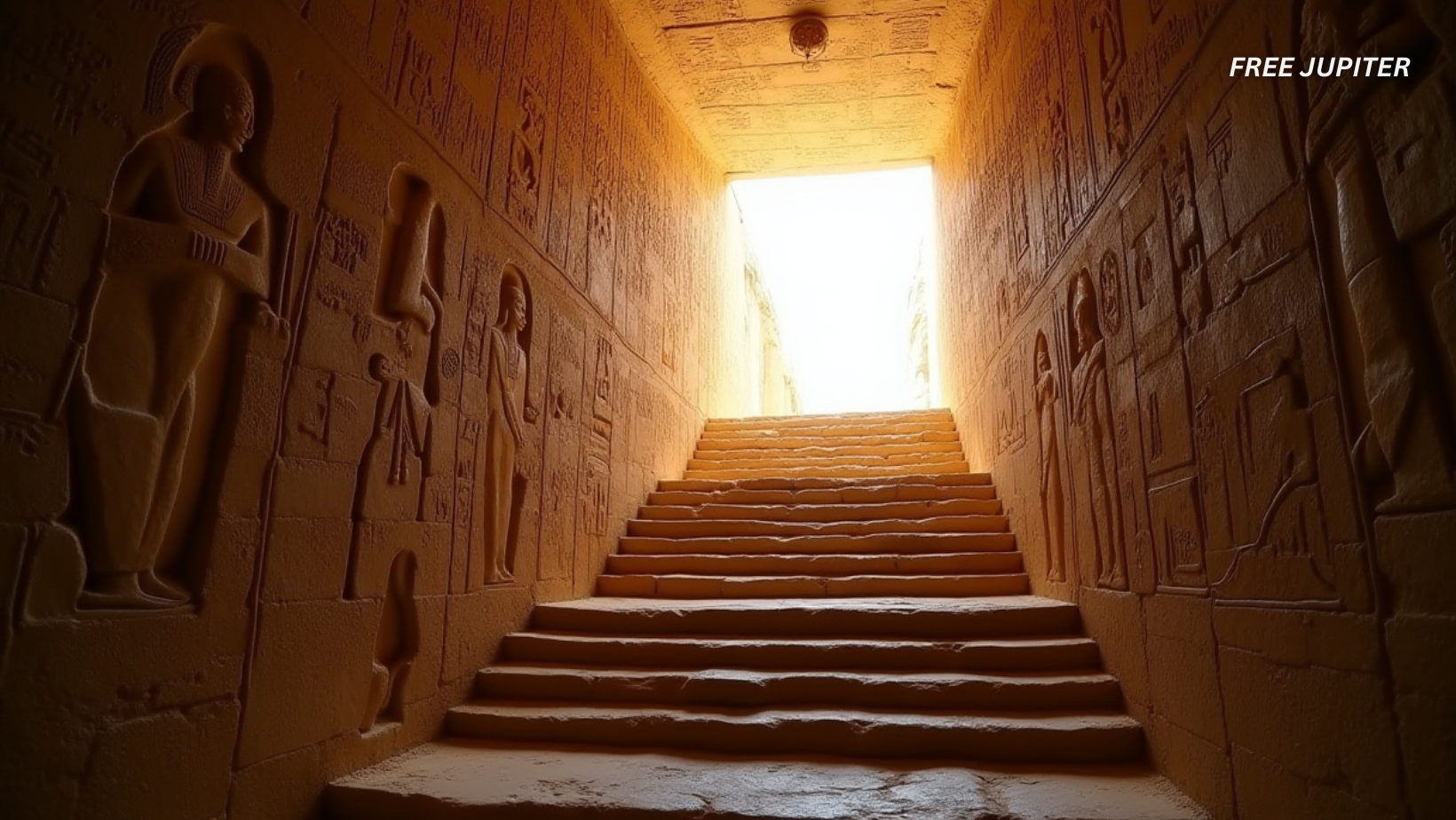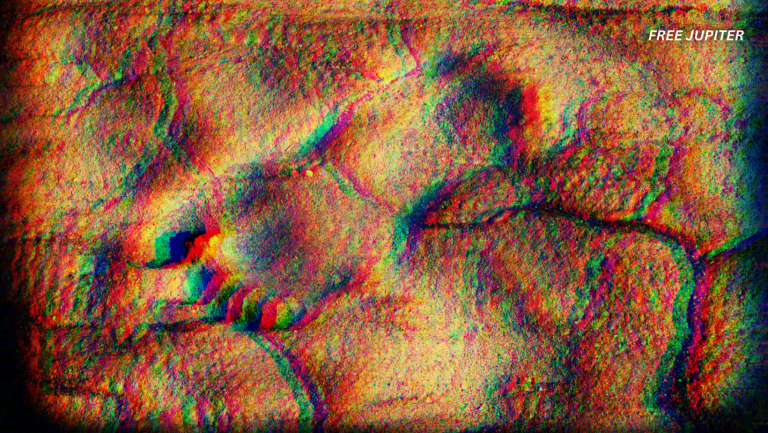Tucked within the rugged cliffs of Egypt’s Athribis region, an extraordinary discovery has quietly come to light. Hidden for centuries beneath layers of rock and dust, an ancient temple has been unearthed, its secrets slowly unfolding under the hands of a dedicated team of archaeologists.
This stunning revelation has emerged from a long-running excavation led jointly by the University of Tübingen in Germany and Egypt’s Ministry of Tourism and Antiquities. Since 2012, the region has been the focus of intensive archaeological efforts, particularly within a broader temple district believed to have been a significant religious site in ancient times. However, it was only in 2022 that evidence of this specific temple first came to light.
The discovery did not immediately reveal all its grandeur. What began as scattered fragments and protruding limestone blocks slowly turned into something far more promising. The temple was hidden in the very heart of a cliff—its presence almost invisible to the casual observer. But layer by layer, stone by stone, a long-lost piece of history began to resurface.
Though much of the structure remains concealed, tantalizing hints of a vast complex have been uncovered. Just about 16 feet of the temple’s entrance pillars remain standing today. Yet, the layout and the architectural clues point to a structure that was once much grander, likely including multiple hidden rooms, storage chambers, and winding staircases carved into the rock.
According to Christian Leitz, a professor at the Institute for Ancient Near Eastern Studies at the University of Tübingen, the smooth limestone surfaces on the vertical cliffside suggest that the temple might have included a rock-cut sanctuary. These sanctuaries were often constructed as sacred spaces, carved directly into stone cliffs to symbolize strength, permanence, and a connection to the divine.
Reliefs etched into the walls of the northern tower at the temple’s entrance have added even more weight to the theory. A mixture of symbolic art and hieroglyphics dating back to the 2nd century B.C. was found. These artistic remnants appear to honor Ptolemy VIII, a ruler from the later Ptolemaic dynasty, indicating that the temple’s origins might be traced to his reign. The scenes portray a royal figure presenting offerings to the lion-headed goddess Repit and her son Kolanthes, both deities deeply rooted in ancient Egyptian mythology.
Read more: Scientists Discover The Great Pyramid of Giza Was Used As A ‘Power Plant’
From these depictions, researchers believe that Ptolemy VIII likely played a pivotal role in the temple’s construction or expansion. His rule, though politically turbulent, was known for its patronage of traditional Egyptian religion, and this hidden temple might have been part of that broader cultural preservation.
Perhaps the most captivating moment during the excavation occurred when a previously unknown chamber was discovered within the northern tower. This chamber had been sealed off by a massive 20-ton ceiling block. To access it, the team used a combination of wooden scaffolding, air cushions, and rollers—a careful dance between engineering precision and archaeological caution. Once opened, the space revealed itself as a probable storage room, filled long ago with temple utensils and amphorae—large ceramic vessels once used to carry sacred oils, wine, or grain offerings.
What made this chamber even more intriguing was its accessibility. A corridor connected it to the main tower pylon, suggesting that it might have served a vital function, possibly for priests or temple staff. This strategic design would have allowed access to sacred items without disturbing central rituals occurring in the temple’s main sanctum.
Throughout the surrounding corridor, even more reliefs and inscriptions were found. Repit, the lion-headed goddess, was prominently featured, suggesting that she was perhaps the temple’s central deity. Her symbolic presence in so many scenes hints at a specialized cult or ritual practice unique to this temple alone.
Across from her image on a nearby door frame, the fertility god Min was also depicted. He stood alongside two rarely seen celestial figures known as “decans.” These star-associated beings were once believed to help track time during the night and were deeply embedded in Egyptian astrological tradition. Unlike typical portrayals, these decans had distinctly unusual features—one had a falcon’s head, and the other bore the head of an ibis, both perched upon human-like bodies. Such depictions are considered rare, and their presence here suggests the temple may have held unique spiritual or astrological significance.
Read more: Scientists Are Investigating Puzzling Underground ‘Anomaly’ Near the Giza Pyramids
Another architectural surprise emerged when the façade of the pylon was studied more closely. A second doorway—previously unnoticed—was discovered, leading to what appeared to be a stairwell. Though the staircase had long since collapsed, it originally spanned at least four stories, leading upward into what was likely a second level or rooftop chamber. That upper floor, now lost to time, might once have served as additional storage space or even an observatory used in conjunction with the star-based decan figures carved below.
As work continues, the team remains focused on exploring beyond the entrance. The artistry and structure already unearthed suggest there could be much more hidden behind the still-sealed walls and undisturbed rubble. Clues etched into the stone hint at further chambers, perhaps even deeper into the cliff, waiting to be revealed.
This kind of cliffside temple is not entirely unheard of in ancient Egypt, but the intricacy and scale of this one set it apart. Its hidden location, the multi-layered architectural features, and the elaborate iconography suggest it was a significant religious site—possibly even a pilgrimage destination for worshippers seeking Repit’s blessings.
Interestingly, the choice of location might not have been just symbolic. Temples carved into cliffs were more protected from natural decay, looting, and even political upheaval. While free-standing temples in cities often suffered destruction or were repurposed across centuries, those embedded into rock faces stood a better chance of survival.
The Athribis temple, despite its partial ruin, stands as a testament to this. Its rediscovery is offering scholars a chance to reassess Egypt’s religious and architectural practices during the late Ptolemaic period—a time when Egyptian traditions were actively being preserved even as Greek influences increasingly took root.
Further analysis of the site is underway, involving advanced scanning techniques and 3D mapping to get a clearer picture of what might still be hidden. Satellite imaging and ground-penetrating radar are being considered to help detect hollows or passageways behind solid walls. Every fragment found—from the smallest piece of pottery to the most complex hieroglyphic panel—is being cataloged and studied in meticulous detail.
The implications of this discovery stretch beyond architecture and religious symbolism. It’s opening new conversations about regional worship practices, the role of astronomy in Egyptian spirituality, and the evolution of temple construction under foreign rule.
Read more: Pythagorean Theorem Found on Ancient Tablet 1,000 Years Older Than Pythagoras Himself
In the weeks and months ahead, it is expected that more revelations will come to light. New chambers may be opened. More inscriptions might be translated. Forgotten rituals could be better understood.
But for now, one truth remains clear: beneath the surface of the Athribis cliffs, an extraordinary piece of human history has been hidden in silence for centuries. And thanks to careful hands and curious minds, its voice is slowly returning to the world.










